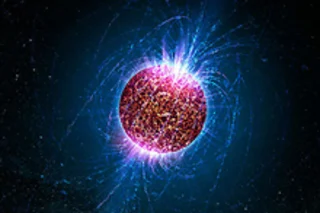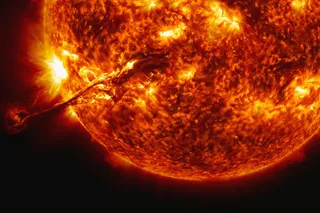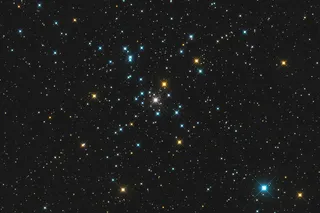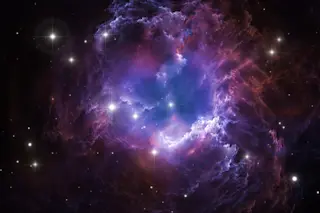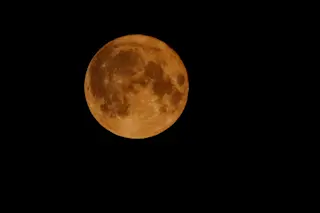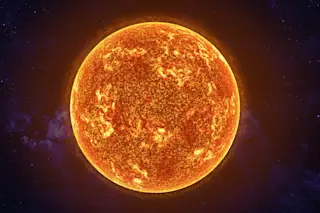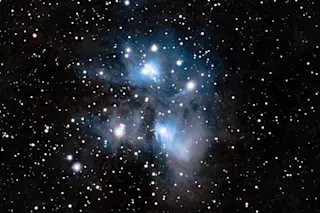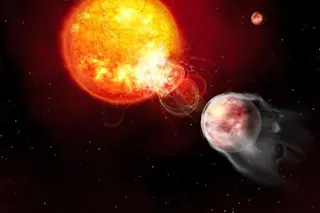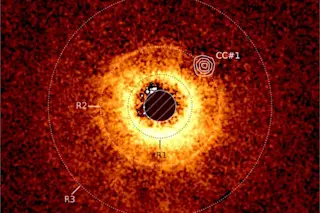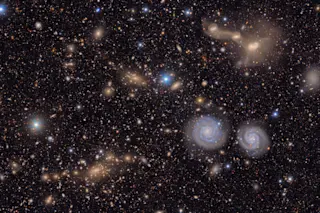Where once there was a star 20 times the size of our sun, now there is a record breaker. Astronomers report this week in Nature that when the huge star went supernova, it collapsed into a neutron star that is heaviest they've ever seen, with twice the mass of our sun compacted into a tiny space. Aside from taking its place in the record books, this massive monster could reveal what truly goes on deep in the heart of a deceased star. The neutron star is part of a binary star system called J1614-2230, in which it and a white dwarf are locked in a spin cycle. Thanks to the neutron star's steady emission of radio waves and a handy trick of relativity, scientists can measure the size of the two objects despite the fact that they're 3,000 light years from here.
The astronomers took detailed measurements of the radio pulses that reached Earth. As these pulses, which originate from the rotation of the neutron star, passed by the companion white dwarf, their timing was delayed due to the highly warped nature of spacetime—an effect known as Shapiro delay. In a highly inclined, nearly edge-on system such as J1614-2230 the effect allows astronomers to make very accurate measurements both of the neutron star and its companion. [Ars Technica]
Neutron stars form under incredible pressure when a star goes nova—pressure that can mash protons and electrons together to form neutrons, the thinking goes. Their extreme character, with a mass often greater than our sun packed into an area no bigger than a city, makes neutron stars the perfect test subjects for some weird physics, study author Paul Demorest
says.
"Neutron stars are some of the best astronomical objects to probe fundamental physics itself. They are the most dense form of matter that exists in stable configurations," Demorest [says]. Only black holes are denser. But since light can't escape from these gravitational pits, black holes keep their inner workings to themselves. [Discovery News]
Still, what happens inside a neutron star is no settled question. Researchers just don't know exactly how matter behaves when it's crushed and pummeled into such out-of-this-world densities, and so some astronomers suggest there's much more to neutron stars than just neutrons.
Rival models suggest that the objects might be made up of the constituents of neutrons — free quarks — or other types of exotic matter, such as 'hyperons'. [Nature]
However, Demorest says, the most exotic of those constituents—like hyperons
and free quarks—could not form a neutron star this massive, so his study may trim the possibilities of what's stirring inside these star corpses.
"It's simply that if those particles were formed, the star would get too dense and collapse into a black hole prior to this point," [he] said. [BBC News]
Related Content: 80beats: Neutron Stars Prove Einstein Right (Again)
80beats: Lost and Found: Supernova Remnant Recaptured by Hubble
80beats: A Baby Neutron Star, Swaddled in a Carbon Atmosphere
DISCOVER: The Case of the Missing Neutron Stars
DISCOVER: A New Type of Star
Image: Casey Reed/Penn State University


